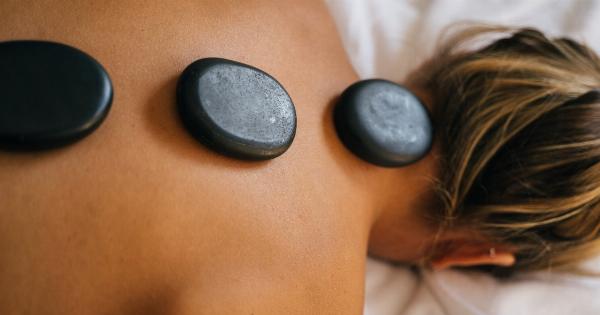Suffering from cervical and back pain can be debilitating and affect your daily activities. Whether it’s due to poor posture, muscle strain, or an underlying medical condition, finding relief is essential for your overall well-being.
While there are various treatments available, incorporating a few simple tips into your daily routine can make a significant difference in managing and alleviating cervical and back pain. Here are six easy tips that you can follow:.
1. Maintain Proper Posture
Poor posture is often the underlying cause of cervical and back pain. Slouching or hunching over while sitting or standing puts excessive strain on your neck and spine, resulting in pain and discomfort.
By maintaining proper posture, you can reduce the strain on your muscles and joints, effectively relieving pain. Ensure that your shoulders are relaxed, your back is straight, and your core muscles are engaged. Use ergonomic chairs or supportive cushions to maintain a healthy posture.
2. Stretch and Strengthen
Engaging in regular stretching and strengthening exercises can help alleviate cervical and back pain. Gentle stretches such as neck rotations, shoulder rolls, and spine twists can improve flexibility and reduce muscle tension.
Strengthening exercises that target your core muscles, such as planks and bridges, can provide better support to your spine. It’s important to consult with a healthcare professional or a qualified trainer to learn the appropriate exercises for your specific condition.
3. Take Breaks From Prolonged Sitting
If your job requires long hours of sitting, it’s crucial to take frequent breaks to prevent the build-up of muscle tension and stiffness. Sitting for extended periods can strain your cervical and back muscles, leading to pain and discomfort.
Get up from your desk every 30 minutes and take a short walk or stretch your muscles to relieve the strain. Additionally, consider using a standing desk or an ergonomic chair that provides adequate support to your back.
4. Improve Sleeping Habits
Ensuring proper sleep and maintaining good sleeping habits are essential for relieving cervical and back pain. Make sure you have a comfortable mattress and pillow that provide adequate support to your spine.
Avoid sleeping on your stomach as it puts unnecessary strain on your neck and back. Instead, try sleeping on your side or back with a pillow that helps maintain the natural curve of your spine. If needed, use additional pillows to support your knees or between your legs to promote alignment.
5. Apply Heat and Cold Therapies
Heat and cold therapies are effective in reducing cervical and back pain. Applying a warm compress or taking a warm shower can help relax tense muscles and improve blood circulation in the affected area.
This can provide immediate relief and reduce inflammation. On the other hand, cold therapies such as ice packs or cold compresses can numb the area, reduce swelling, and alleviate pain. Alternate between heat and cold therapies for optimum relief.
6. Maintain a Healthy Weight and Diet
Excess weight can put strain on your spine and worsen cervical and back pain. Maintaining a healthy weight through a balanced diet and regular exercise can help alleviate the pressure on your joints, muscles, and discs.
Include foods rich in calcium, vitamin D, and magnesium to promote bone strength and reduce the risk of degenerative conditions that cause back pain. Additionally, stay hydrated to improve the elasticity of your muscles and maintain overall spinal health.
Remember, while these tips can offer relief, it’s essential to consult with a healthcare professional if your cervical and back pain persists or worsens. They can provide a comprehensive assessment and recommend personalized treatment options.































